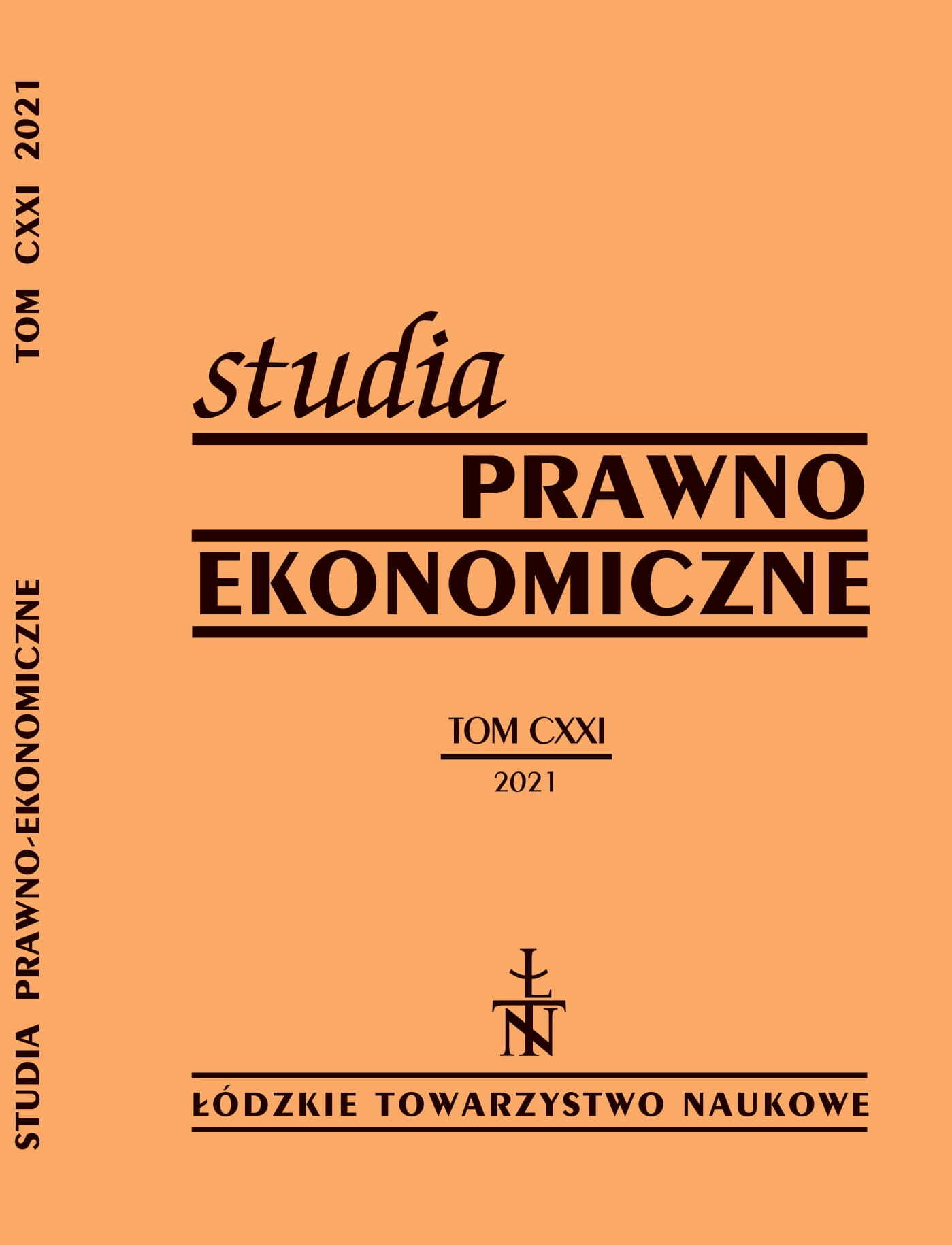Efekt zarażania w Europie Środkowo-Wschodniej w czasie kryzysu pandemicznego. Zastosowanie metody regresji kwantylowej
DOI:
https://doi.org/10.26485/SPE/2021/121/11Słowa kluczowe:
regresja kwantylowa, efekt zarażania, rynek giełdowyAbstrakt
Przedmiot badań: W niniejszym artykule badane są powiązania między rynkami giełdowymi stosującymi strategię bezpośredniego celu inflacyjnego największych gospodarek Europy Środkowo-Wschodniej w latach 2020–2021.
Cel badawczy: Badanie empiryczne ma na celu identyfikację wpływu pandemii koronawirusa oraz niepewności na rynkach giełdowych i walutowych na skalę zarażania między rynkami kapitałowymi w Europie Środkowo-Wschodniej.
Metoda badawcza: Wykorzystywana jest metoda regresji kwantylowej.
Wyniki: Rezultaty wskazują, że zarówno globalna, jak i krajowa niepewność na rynku giełdowym wpływała na transmisję szoków pozytywnych i negatywnych. Zaobserwowane zostały również powiązania między niepewnością na rynkach walutowych Polski, Czech i Węgier a intensywnością transmisji szoków między giełdami tych krajów. Przebieg pandemii koronawirusa miał silny wpływ na zachowania inwestorów i wzmacniał transmisję szoków.
Liczba pobrań
Bibliografia
Acharya V.V., Drechsler I., Schnabl P., A Pyrrhic victory? – Bank Bailouts and Sovereign Credit Risk, NBER Working Papers 2012/17136.
Allen F., Babus A., Carletti E., Asset Commonality, Debt Maturity and Systemic Risk, Journal of Financial Economics 2012/105, s. 519–534.
Allen F., Babus A., Carletti E., Financial Crises: Theory and Evidence, Annual Review of Fi¬nancial Economics 2009/1, s. 97–116.
Bahmani-Oskooee M., Saha S., On the Relation between stock prices and exchange rates: A re¬view article, Journal of Economic Studies 2015/42, s. 707–732.
Baur D., The structure and degree of dependence: a quantile regression approach, Journal of Banking and Finance 2013/37, s. 786–798.
Baur D., Schulze N., Coexceedances in financial markets – a quantile regression analysis of contagion, Emerging Markets Review 2005/6, s. 21–43.
Bieńkowski W., Gawrońska-Nowak B., Grabowski W., Comovements of stock markets in the CEE-3 countries during the global financial crisis, Eastern European Economics 2014/52, s. 32–55.
Brzeszczyński J., Welfe A., Are There Benefits from Trading Strategy Based on the Returns Spillovers to the Emerging Stock Markets? Evidence from Poland, Emerging Markets Finance and Trade 2007/43, s. 74–92.
Diebold F.X., Yilmaz K., Better to Give than to Receive: Forecast-Based Measurement of Vola¬tility Spillovers, International Journal of Forecasting 2012/28, s. 57–66.
Doman M., Doman R., Dynamika zależności na globalnym rynku finansowym, Wydawnictwo Diffin, Warszawa 2014.
Dungey M., Fry R.A., Gonzalez-Hermosillo B., Martin V., Transmission of Financial Crises and Contagion: A Latent Factor Approach, Oxford University Press, New York 2010.
Elliot G., Rothenber T.J., Stock J.H., Efficient tests for an autoregressive unit root, Econometrica 1996/64, s. 813–836.
Forbes K.J., The “BIG C”: identifying contagion, NBER Working Papers 2012/18465.
Forbes K.J., Chin M.D., A decomposition of global linkages in financial markets over time, Review of Economics and Statistics 2004/86, s. 705–722.
Gerlach S., Smets F., Contagious Speculative Attacks, European Journal of Political Economy 1995/11, s. 45–63.
Glick R., Rose A., Contagion and Trade: Why Are Currency Crises Regional?, Journal of Inter¬national Money and Finance 1999/18, s. 603–617.
Grabowski W., Welfe A., The tobit cointegrated vector autoregressive model: An application to the currency market, Economic Modelling 2020/89, s. 88–100.
Gupta R., Subramaniam S., Bouri E., Ji Q., Infectious disease-related uncertainty and the safe-haven characteristic of US treasury securities, International Review of Economics and Finance 2021/71, s. 289–298.
Harkmann K., Stock Market Contagion from Western Europe to Central and Eastern Europe during the Crisis Years 2008–2012, Eastern European Economics 2014/52, s. 55–65.
Horvath R., Lycosa S., Baumohl E., Stock market contagion in Central and Eastern Europe: unexpected volatility and extreme coexceedance, European Journal of Finance 2018/24, s. 391–412.
Kadlackova N., Komarek L., Foreign exchange market contagion in Central Europe from the viewpoint of extreme value theory, Prague Economic Papers 2017/26, s. 690–721.
King M.A., Wadhwani S., Transmission of Volatility Between Stock Markets, Review of Finan¬cial Studies 1990/1, s. 5–33.
Kodres L.E., Pritsker M., A Rational Expectations Model of Financial Contagion, Journal of Finance 2002/57, s. 769–799.
Luchtenberg K.F., Vu Q.V., The 2008 financial crisis: Stock market contagion and its determi¬nants, Research in International Business and Finance 2015/33, s. 178–203.
Moagar-Poladian S., Clichichi D., Stanciu C.-V., The Comovement of Exchange Rates and Stock Markets in Central and Eastern Europe, Sustainability 2019/11, s. 3985.
Morales-Zumaquero A., Sosvilla-Rivero S., Volatility spillovers between foreign exchange and stock markets in industrialized economies, Quarterly Review of Economics and Finance 2018/70, s. 121–136.
Raddatz C., Schmukler S., On the International Transmission of Shocks: Micro-Evidence from Mutual Fund Portfolios, Journal of International Economics 2012/88, s. 357–374
Shin H.S., Global Banking Glut and Loan Risk Premium, IMF Economic Review 2012/60, s. 155–192.
Syllignakis M.N., Kouretas G.P., German, US and Eastern European Stock Market Integration, Open Economies Review 2010/27, s. 607–628.



